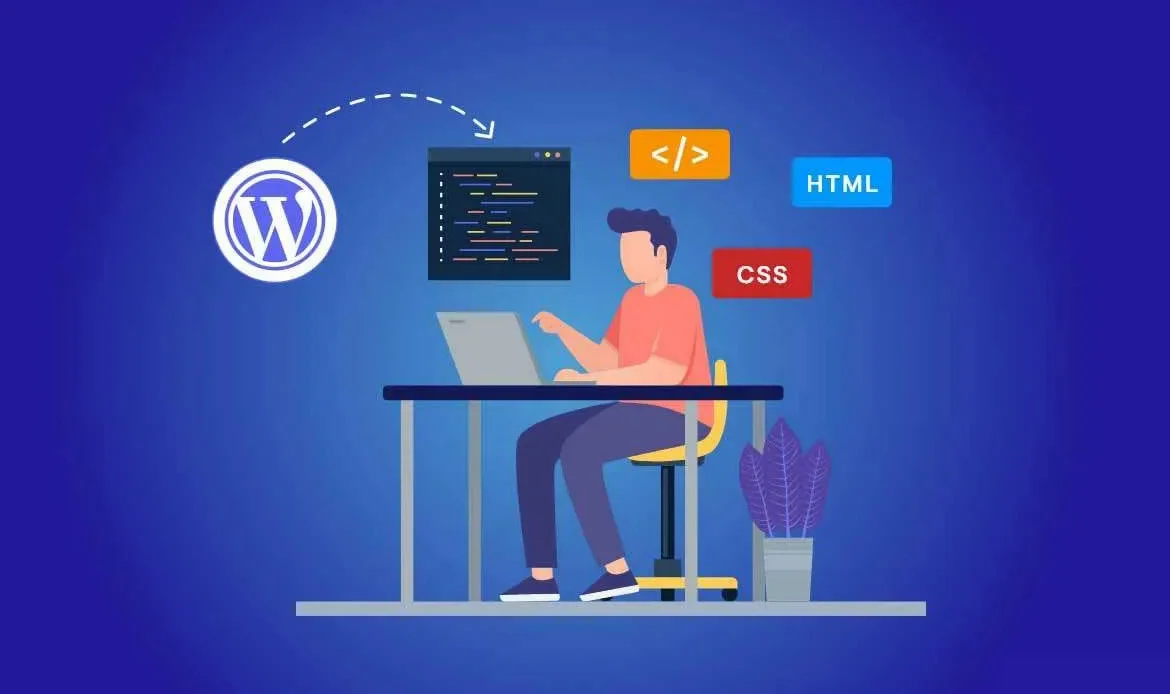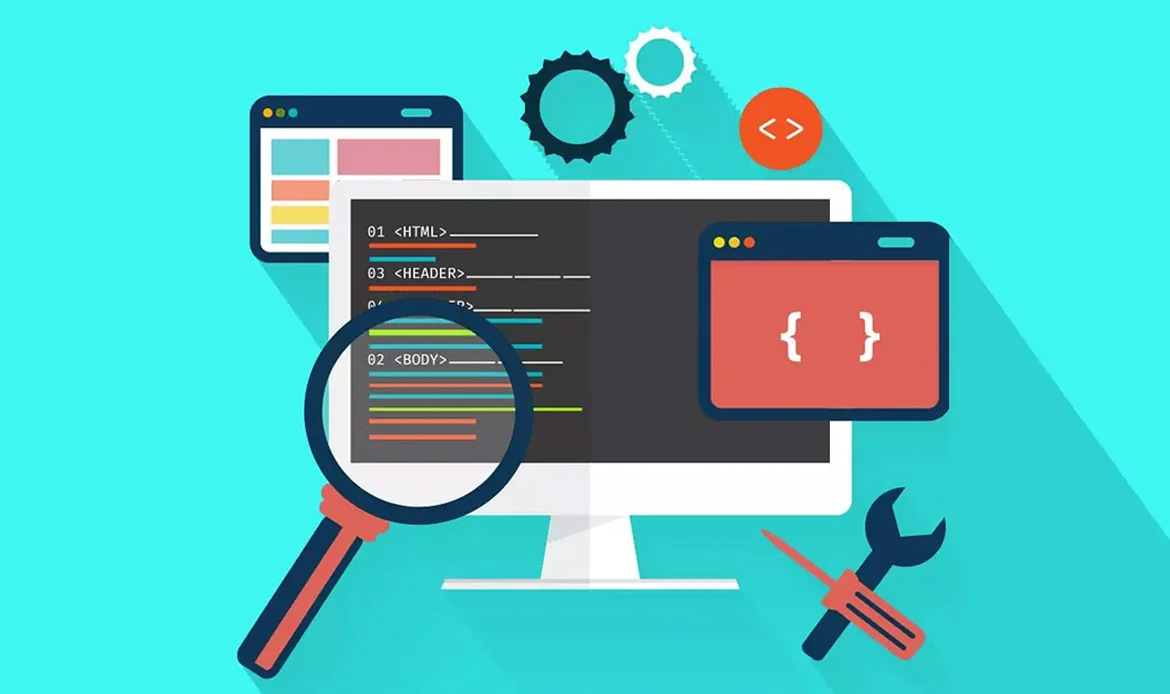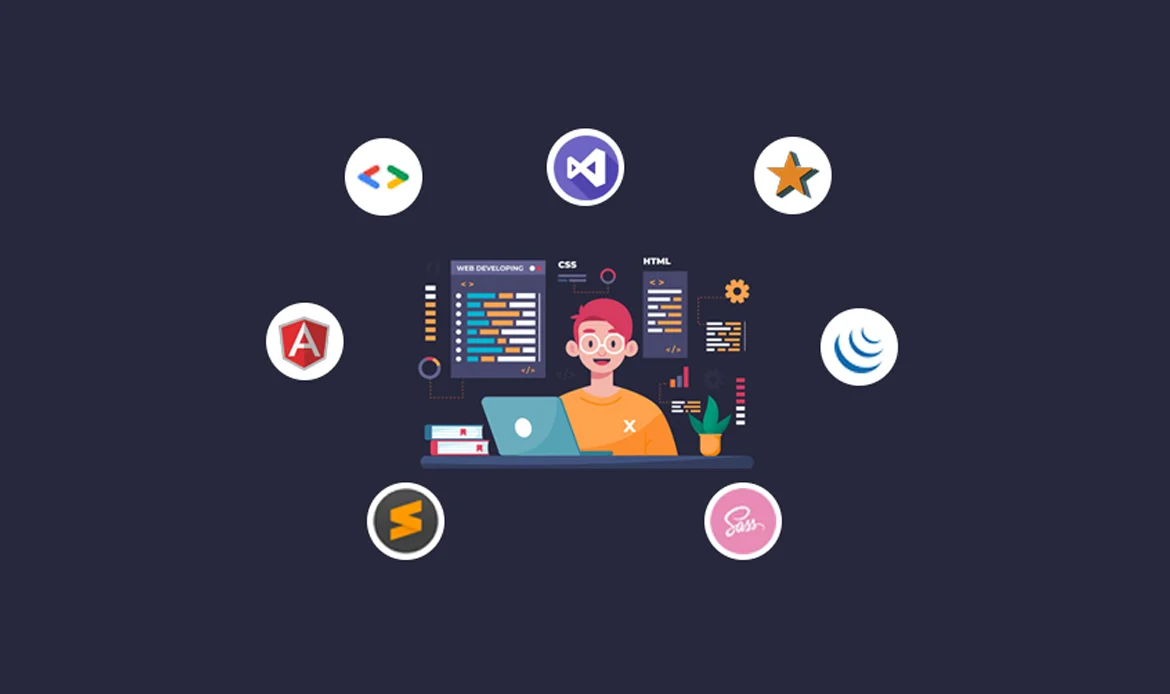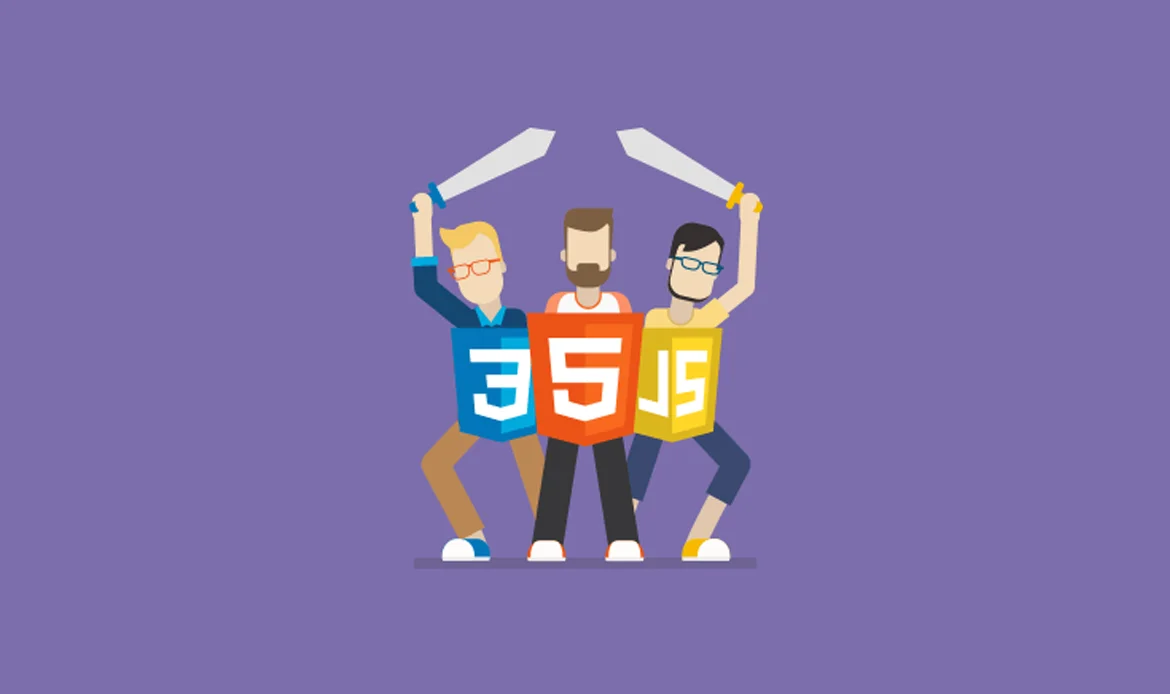“Ready to become a front-end development pro? Explore our guide packed with invaluable insights and practical tips to sharpen your skills and tackle any web project with confidence.”
In today’s digital age, where the internet serves as a primary platform for communication, commerce, and entertainment, the role of front-end development has never been more crucial. Front-end developers are the architects behind the immersive and user-friendly interfaces that captivate audiences and drive engagement on the web. From sleek and responsive designs to seamless interactions and intuitive navigation, Mastering the Art of Front-End Design is essential for creating impactful and memorable online experiences.
In this article, we embark on a journey to explore the key skills and techniques necessary for Mastering the Art of Front-End Design. We delve into the fundamental building blocks of HTML, CSS, and JavaScript, uncovering the intricacies of each language and their pivotal roles in shaping the digital landscape. Beyond the basics, we unravel advanced concepts such as responsive design, accessibility, and web performance optimization, equipping aspiring developers with the tools needed to craft interfaces that transcend boundaries and cater to diverse audiences.
Understanding Front-End Development

Front-end development is the process of designing and building the user-facing components of websites and web applications. It involves the creation and implementation of HTML, CSS, and JavaScript code to create visually appealing and interactive interfaces that users interact with directly in their web browsers. Front-end developers work to ensure that websites and applications are responsive, accessible, and compatible across different devices and browsers.
They use frameworks, libraries, and design principles to streamline development and enhance user experience, while also considering factors like usability, performance, and maintainability. Front-end development plays a critical role in delivering engaging and intuitive digital experiences, blending design aesthetics with technical functionality to bring web projects to life.
Key Skills for Front-End Development

HTML (HyperText Markup Language)
HTML serves as the backbone of web development, defining the structure and content of web pages. This language utilizes various elements, tags, and attributes to organize content effectively. Understanding HTML allows developers to create well-structured and semantically meaningful documents, which are essential for accessibility, SEO, and maintainability.
CSS (Cascading Style Sheets)
CSS is responsible for styling the appearance of HTML elements, controlling aspects such as layout, color, typography, and responsiveness. Proficiency in CSS involves mastery of selectors (used to target specific elements), specificity (determines which style rule takes precedence), and layout techniques like flexbox and grid, which enable developers to create visually appealing and responsive designs.
JavaScript
JavaScript is a dynamic programming language that adds interactivity and functionality to web pages. Mastery of JavaScript involves understanding its core concepts, such as variables, functions, objects, and events. Additionally, familiarity with modern frameworks and libraries like React, Vue.js, or Angular enhances a developer’s ability to build complex and interactive web applications efficiently.
Responsive Design
With the proliferation of various devices and screen sizes, responsive design has become essential for ensuring that websites adapt seamlessly to different viewport sizes. Front-end developers must master techniques such as media queries (allowing styles to adapt based on screen size), and flexible grids to create layouts that look and function well across desktops, tablets, and smartphones.
Version Control Systems
Proficiency in version control systems like Git is crucial for collaborative development. These systems enable developers to track changes, manage code versions, and facilitate teamwork by allowing multiple developers to work on the same project concurrently. Understanding concepts such as branching, merging, and pull requests ensures efficient collaboration and code management.
Web Performance Optimization
Optimizing web performance is essential for delivering fast and efficient user experiences. Front-end developers should be familiar with techniques such as code minification (reducing file sizes by removing unnecessary characters), image optimization (compressing images without sacrificing quality), lazy loading (loading resources only when needed), and caching (storing data temporarily for faster access) to improve website speed and performance.
Accessibility
Creating accessible web experiences ensures that everyone, including users with disabilities, can access and interact with websites effectively. Front-end developers should adhere to accessibility guidelines and techniques, such as using semantic HTML (providing meaning and structure), implementing ARIA roles (enhancing accessibility for dynamic content), and enabling keyboard navigation, to build inclusive websites that can be accessed by all users.
Cross-Browser Compatibility
Front-end developers must ensure that websites function consistently across different web browsers and devices. This involves testing and debugging techniques to identify and fix compatibility issues that may arise due to variations in browser rendering engines and standards compliance. Ensuring cross-browser compatibility enhances user experience and ensures broader reach for the website.
Overall, mastery of these key skills is essential for front-end developers to create high-quality, user-friendly, and accessible web experiences in today’s digital landscape.
Essential frontend development tools

Text Editors / Integrated Development Environments (IDEs):
- Visual Studio Code (VS Code): A highly popular and feature-rich code editor developed by Microsoft. It offers extensive customization, support for numerous programming languages, and a vast ecosystem of extensions for frontend development.
- Sublime Text: A lightweight and fast text editor known for its speed and simplicity. It supports syntax highlighting, code folding, and a range of plugins to extend functionality.
- Atom: An open-source text editor created by GitHub. It features a sleek interface, built-in package manager, and support for custom themes and plugins.
- Git: A distributed version control system widely used for tracking changes in code, collaborating with teams, and managing project history. Platforms like GitHub, GitLab, and Bitbucket offer Git hosting services and additional collaboration features.
- GitHub Desktop, GitKraken, Sourcetree: GUI-based Git clients that provide an intuitive interface for managing repositories, branches, and commits.
CSS Preprocessors:
- Sass (Syntactically Awesome Style Sheets): A popular CSS preprocessor that extends CSS with features like variables, nesting, mixins, and inheritance. It offers improved maintainability and efficiency in writing stylesheets. Less: Another CSS preprocessor that simplifies CSS authoring by adding features like variables, mixins, and functions. It compiles into standard CSS and integrates seamlessly with existing projects.
Task Runners / Build Tools:
- Webpack: A module bundler that processes JavaScript, CSS, and other assets for deployment. It offers features like code splitting, asset optimization, and hot module replacement for efficient development workflows.
- Gulp, Grunt: Task runners that automate repetitive tasks such as file minification, image optimization, and compilation of Sass or Less. They use configuration files to define tasks and dependencies, enabling developers to streamline build processes.
JavaScript Libraries and Frameworks:
- React.js: A declarative and component-based JavaScript library for building user interfaces. It facilitates the creation of reusable UI components and offers efficient state management through features like React Hooks and Context API.
- Vue.js: A progressive JavaScript framework for building interactive web interfaces. It emphasizes simplicity and flexibility, with a gentle learning curve and a rich ecosystem of plugins and tools.
- Angular: A comprehensive framework maintained by Google for building large-scale, single-page applications. It provides features like two-way data binding, dependency injection, and a robust CLI for scaffolding projects.
Responsive Design Tools:
- Chrome DevTools: Built into the Google Chrome browser, DevTools offers a range of features for inspecting and debugging web pages. It includes tools for analyzing layouts, testing responsiveness, and simulating various device sizes.
- Responsive Design Mode (Firefox): Similar to Chrome DevTools, Firefox’s Responsive Design Mode enables developers to preview and test websites across different screen sizes and resolutions.
- Adobe XD, Figma: Design tools that facilitate the creation of responsive layouts and prototypes. They offer features for designing interfaces, creating interactive prototypes, and collaborating with team members.
Testing and Debugging Tools:
- Jest, Jasmine, Mocha: JavaScript testing frameworks for writing and running unit tests, integration tests, and end-to-end tests. They provide features for test automation, assertion libraries, and mocking dependencies.
- Chrome Lighthouse: A tool for auditing web page performance, accessibility, and SEO. It generates reports with recommendations for improving website quality and user experience.
- Cypress, Selenium: End-to-end testing frameworks for automating browser interactions and user flows. They simulate user actions and verify expected behavior across different browsers and devices.
Package Managers:
- npm (Node Package Manager): A package manager for Node.js that facilitates the installation, management, and sharing of JavaScript packages. It is commonly used for managing frontend dependencies and build scripts.
- Yarn: A fast and reliable package manager developed by Facebook. It offers features like offline installation, parallel execution, and deterministic dependency resolution for improved performance and reliability.
These are just a few examples of the myriad tools available to frontend developers. Depending on project requirements, team preferences, and individual workflows, developers may choose to incorporate additional tools and technologies into their frontend development stack.
Keeping Up with Frontend Trends and Resources
 Frontend development is a dynamic field that constantly evolves with new technologies, frameworks, and best practices. To stay competitive and deliver cutting-edge solutions, it’s essential for developers to stay informed about the latest trends and leverage resources for continuous learning and skill enhancement.
Frontend development is a dynamic field that constantly evolves with new technologies, frameworks, and best practices. To stay competitive and deliver cutting-edge solutions, it’s essential for developers to stay informed about the latest trends and leverage resources for continuous learning and skill enhancement.
Blogs and Newsletters:
Blogs like CSS-Tricks, Smashing Magazine, and A List Apart provide valuable insights, tutorials, and articles on frontend development trends, techniques, and best practices. Subscribing to newsletters such as JavaScript Weekly, CSS Weekly, and Frontend Focus delivers curated content directly to your inbox, keeping you updated on the latest news, tools, and resources in frontend development.Online Communities and Forums:
Platforms like Stack Overflow, Reddit (r/frontend, r/webdev), and Dev.to offer vibrant communities where developers can seek advice, share knowledge, and participate in discussions on frontend development topics. Joining Slack channels or Discord servers dedicated to frontend development allows developers to connect with peers, exchange ideas, and collaborate on projects in real-time.Conferences and Meetups:
Attending frontend-focused conferences and meetups provides opportunities to learn from industry experts, network with fellow developers, and gain insights into emerging trends and technologies. Events like Frontend Masters, React Europe, and VueConf offer keynote presentations, workshops, and networking sessions tailored to frontend developers of all skill levels.Online Courses and Tutorials:
Platforms like Udemy, Coursera, and Pluralsight offer a wide range of frontend development courses covering topics such as HTML, CSS, JavaScript, and popular frameworks like React, Vue.js, and Angular. Free resources like MDN Web Docs, W3Schools, and freeCodeCamp provide comprehensive tutorials, documentation, and interactive exercises for learning frontend development at your own pace.Podcasts and YouTube Channels:
Listening to podcasts such as Syntax, ShopTalk Show, and Frontend Happy Hour offers insights into frontend development trends, tools, and industry news through discussions and interviews with experts. YouTube channels like Traversy Media, The Net Ninja, and Academind provide video tutorials, walkthroughs, and tips for frontend development, catering to visual learners and offering hands-on guidance.Open Source Projects and Contributions:
Contributing to open-source projects allows developers to gain hands-on experience, collaborate with other developers, and make meaningful contributions to the frontend development community. Platforms like GitHub, GitLab, and Bitbucket host millions of open-source repositories covering frontend frameworks, libraries, tools, and utilities that developers can explore, contribute to, and learn from.Social Media and Online Communities:
Following influencers, thought leaders, and companies on platforms like Twitter, LinkedIn, and Instagram provides access to a wealth of frontend development content, updates, and discussions. Engaging in online communities such as GitHub Discussions, Hashnode, and DEV Community fosters connections with like-minded developers, promotes knowledge sharing, and facilitates collaboration on frontend projects.Frequently Asked Questions About Front-End Development
What are the essential skills required to become a front-end developer?
A front-end developer should master core technologies like HTML, CSS, and JavaScript, along with frameworks such as React or Vue. Understanding responsive design, accessibility standards, and version control systems like Git is also vital for modern web development.
How can I improve my front-end performance and user experience?
You can enhance performance by optimizing images, minimizing CSS and JavaScript files, and leveraging browser caching. Additionally, implementing lazy loading and using content delivery networks (CDNs) helps improve load times and user satisfaction.
Why is responsive design crucial in front-end development?
Responsive design ensures that your website adapts to different devices and screen sizes, providing a consistent user experience. It also improves accessibility, engagement, and SEO rankings by catering to users across mobile, tablet, and desktop platforms.
Conclusion
As we draw to a close on our exploration of mastering front-end development, it becomes evident that the journey is not merely about acquiring technical skills but embracing a mindset of continuous learning, creativity, and adaptability. Front-end development is a dynamic and ever-evolving field, where innovation and ingenuity drive progress, and staying ahead of the curve is essential for success.
Throughout this article, we’ve uncovered the foundational pillars of front-end development, from HTML and CSS to JavaScript and beyond, delving into advanced concepts like responsive design, accessibility, and performance optimization. Armed with these key skills and techniques, developers are empowered to create immersive, user-centric interfaces that leave a lasting impression on audiences worldwide.
Mastering Front-End Development: Key Skills and Techniques
Take your web design skills to the next level by mastering essential front-end development techniques that define modern websites in 2025. From responsive layouts and intuitive UX design to optimized WordPress themes and lightning-fast performance, every detail matters.


